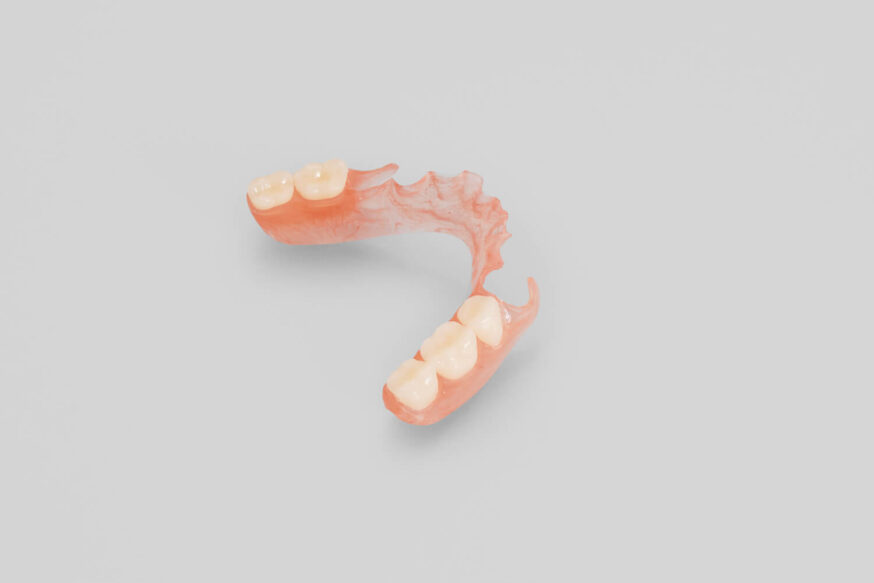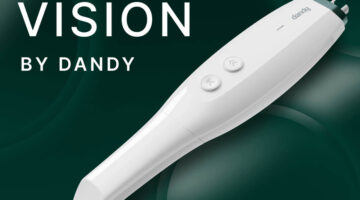Choosing the perfect flexible partial denture material to restore smiles may be challenging for even skilled hands—as making the right choice isn’t just a decision, but a narrative of its own.
We understand how important specifics are when it comes to choices and preferences, which is why we offer insight and considerations to guide you through your next selection process between Duraflex and Valplast.
Duraflex vs Valplast partial dentures
Flexible partial dentures are removable dental prosthetics used as a solution to missing or damaged teeth while also enhancing a person’s smile.
You might ask, why not traditional dentures? Here’s the thing: traditional dentures existed long before the emergence of flexible partial dentures. They were made of acrylic bases, which made them rigid and susceptible to breakage, and people found them uncomfortable. In contrast, flexible partial dentures are softer and more bendable. They are made from a limber, nylon-like material that is lightweight, pliable, and far more flexible than the materials used to make traditional dentures. This is what makes them fit much more comfortably, with a more aesthetically pleasing appearance which is an important factor for many patients. They are also less likely to break, cause irritation or any allergic reaction (metal allergies), or cause discomfort. Most importantly, they are cost-effective.
Flexible partial dentures are often a good option for patients who are missing one or several teeth on their upper or lower arch (row), providing support to the remaining natural teeth. They are designed to replace a single tooth or a few missing teeth rather than full-set teeth replacement—especially for individuals who want to retain as much of their original teeth as possible. Patients who have thin gums or a small mouth may also find it more comfortable than other types of dentures.
In cases of extensive tooth loss, where a patient is in need of replacing more than a subsection or a complete full set, flexible dentures may not be the right choice. Alternative treatments, such as implant-supported or crown and bridge restorations, may be more appropriate.
Material overview of flexible partial dentures
Unlike traditional dentures made with porcelain, resin, and chrome cobalt metal materials, flexible partial dentures are made of a flexible thermoplastic material, such as nylon (Valplast), thermoplastic (TCS), Thermoflex, acetal resin, and Duraflex that conforms to the shape of your patient’s mouth. The materials are made to look realistic, natural, and aesthetically pleasing. The materials plus fit effectively help dentures stay in place with little-to-no discomfort.
Material composition of Duraflex partials
Duraflex partial dentures are made from an ethylene-propylene material. Recognized for its flexibility, strength, durability, and design to provide a secure fit, Duraflex partials allow for easy adaptation to the contours of the mouth, reducing the likelihood of irritation and sore spots.
They are stain-resistant, odorless, lightweight with an aesthetic appeal (chiefly for orange hues), contain no BPAs, and are considered the most biocompatible material. These characteristics make Duraflex flexible partial dentures blend well with the natural gum tissue for a more natural appearance that is non-allergenic. They offer long-term satisfaction and peace of mind for patients. Additionally, Duraflex has the largest ratio of vinyl to composite material, making it the most durable flexible partial denture material Dandy offers.
Pros of Duraflex flexible partial dentures
- They are lightweight, stain-resistant, odor-resistant, and color-stable
- They are flexible and easy to wear
- They are natural-looking due to their craft from an impression of the patient’s teeth.
- They are durable -practically unbreakable and can be easily adjusted by a dentist.
- They are non-allergenic
Cons of Duraflex flexible partial dentures
- Has susceptibility to wear and tear over time
- Is susceptible to bacterial build-up so needs to be cleaned often
- It may feel too tight and uncomfortable until the patient gets used to wearing the denture.
- Not simple to repair so if damaged may need a new set
Material composition of Valplast partials
Valplast was the first flexible partial denture and so set the standard. Valpast is made of a biocompatible nylon thermoplastic as its primary composition, with unique physical and aesthetic properties. They are highly flexible and resistant to breakage due to the composite, which allows them to adapt to the contours of the mouth.
Unlike other types of partial dentures, they don’t have uncomfortable metal clasps to keep them in place that can be visible at times. Instead, they have little projections made from the same nylon resin material that fits over the teeth and gums to help the denture stay in place.
Valplast flexible partial dentures are also known for their strength and durability, which ensures that the partial denture can withstand the forces of chewing and everyday use. The Valplast injection process provides ideal adaptation to both hard and soft tissues.
Advantages of Valplast flexible partial dentures
- They are thinner, lightweight and more comfortable to wear
- They are perfect for patients who are allergic to metal
- They offer great comfort to the wearer
- They have a natural color, fitting into the patient’s desired aesthetics
- They are non-allergenic, monomer and formaldehyde-free
- They are less likely to stain to many other materials
- They are a good fit for people with limited mouth opening.
Disadvantages of Valplast flexible partial dentures
- They can not be heated and remolded to adjust.
- When broken, it cannot be easily fixed.
- They take longer to create in the lab. The material may be more difficult to finish, fit, adjust and colour.
- The possibility of colour degradation with time.
- Due to the material they are made from, there may be difficulty in relining when they no longer fit.
- They require strict dental hygiene.
- They may feel bulkier than other partial dentures.
When to use Duraflex vs Valplast
Although both materials offer flexibility, they may vary in terms of tightness and pliability in certain aspects; the choice largely depends on the specific needs and preferences of the patient.
Duraflex is the best option if you are concerned about tautness and stability. This is because it offers a more secure fit, especially when the patient requires additional stability and retention.
It is perfect for patients who are concerned about the denture coming loose during activities like eating or speaking and for individuals who need long-lasting partial dentures. It’s also the right fit for patients who are not worried about the metal components, such as clasps for attachment to the natural teeth some Duraflex dentures come with.
On the other hand, Valplast is best when flexibility and comfort are key considerations. It is mostly used for its pliability and adaptability with the contours of your mouth. If your patient prioritizes comfort and, at the same time, wants a denture that minimizes the risk of irritation or sore spots, this is an excellent choice.
Also, Valplast is known for its aesthetic appearance. Your patient will most likely care about the appearance of the denture and wants it to blend seamlessly with the natural gum tissue. Since Valplast is entirely metal-free, hence the right fit for patients with allergies or sensitivities to metal components often found in other dentures.
While choosing the best flexible partial denture material for your patient, it is essential to consider their specific oral health, lifestyle, and cosmetic preferences. Do bring them into the conversation of Duraflex vs Valplast and have them help with the decision for better acceptance.
Flexible partial dentures with Dandy
Whether you prefer one material over another or you’re looking for input from your dental lab, our experienced team at Dandy is here to help with all of your partial denture cases. Whether you need to adjust your partials or need input on prescribing your latest case, our team of clinical experts is ready to help. If you’re looking for your next partial dentures lab, look no further.
Reach out to our team today to get started with us.




